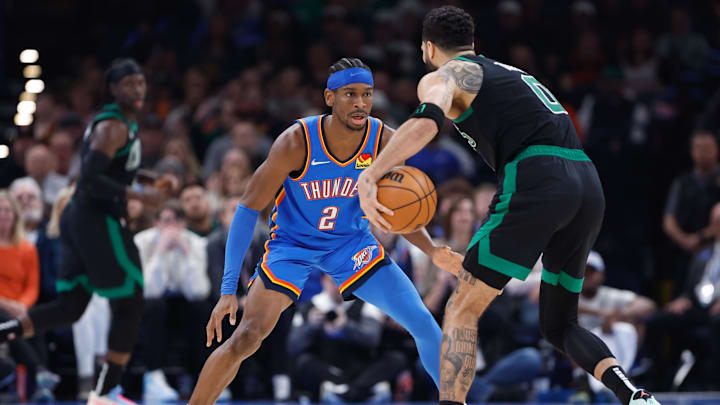The OKC Thunder have officially committed to upwards of $877 million in new, standard contracts this summer, with over $800 million of which being attached to the likes of Shai Gilgeous-Alexander, Jalen Williams, and Chet Holmgren.
Because of this lofty spending spree, many fans and pundits seem concerned about how the ball club will navigate through this tax apron era of the NBA, especially with becoming the league's newest dynasty realistically now in their sights.
A popular topic of discussion has been the offseason that the Boston Celtics are currently enduring, as the franchise has spent the better part of this summer so far parting ways with many key contributors from their 2024 title run to avoid the second-apron and other tax-related penalties.
Considering the large sums of money Brad Stevens shelled out directly after their championship run a year ago, with Sam Presti now showing off his deep pockets, comparisons have been drawn between the two teams, with fears of a similar fate waiting on the horizon for the Thunder.
However, even with all the arguments that have been made for why Oklahoma City may not necessarily be bound for this exact same turnout, there's one particular difference that's not receiving nearly the amount of attention that it deserves.
Thunder don't have multiple players attached to supermax deals
As high of a price tag as Oklahoma City's Big Three netted this summer is, it still trumps in comparison to the one the C's dynamic duo finds itself attached to.
As things currently stand, Boston has not one, but two players earning supermax paydays, with Jayson Tatum earning $313.9 million over five years and Jaylen Brown racking in $285.3 million over five seasons.
Sure, Shai Gilgeous-Alexander may have just put pen to paper on a four-year, $285 million deal that will make him the highest-paid player in NBA history with an average salary of $71.3 million per year, but even that isn't set to kick in until the 2027-28 season.
What this means is, over these final two seasons of his current contract, the Thunder will be astonishingly paying the game's newest MVP and arguably the best player in the association less than 25 percent of the cap.
To put this into perspective, Holmgren's $250 million deal is hard capped at 25 percent ($16 million less per year than a supermax) while Williams' pact that could pay him up to $287 million starts at 25 percent of the cap and is only set to increase to as high as 30 percent if he were to win MVP, DPOY, or be named to the All-NBA First-Team.
Not to mention, both of these contracts won't even kick in until the 2026-27 season, meaning, unlike the Celtics, Oklahoma City still has some time before these fiscal commitments come into play, thus giving them ample time to prepare.
Make no mistake about it, the Thunder will see a significant shift in their front office's approach to roster building and, sadly, will witness several player departures over these next several years as they go from boasting the fifth-lowest cumulative payroll over the last five years to one that's now projected to be $24 million over the second apron once the 2026-27 season rolls around.
However, considering how Sam Presti has constructed things, it seems pretty safe to say that they will be able to avoid the hardships that Boston is facing, and, while much attention has been drawn to their future draft pick collection and staggered contract options as reasons for why, perhaps equally as important is the way in which they were able to divvy up extensions to their core trio.
